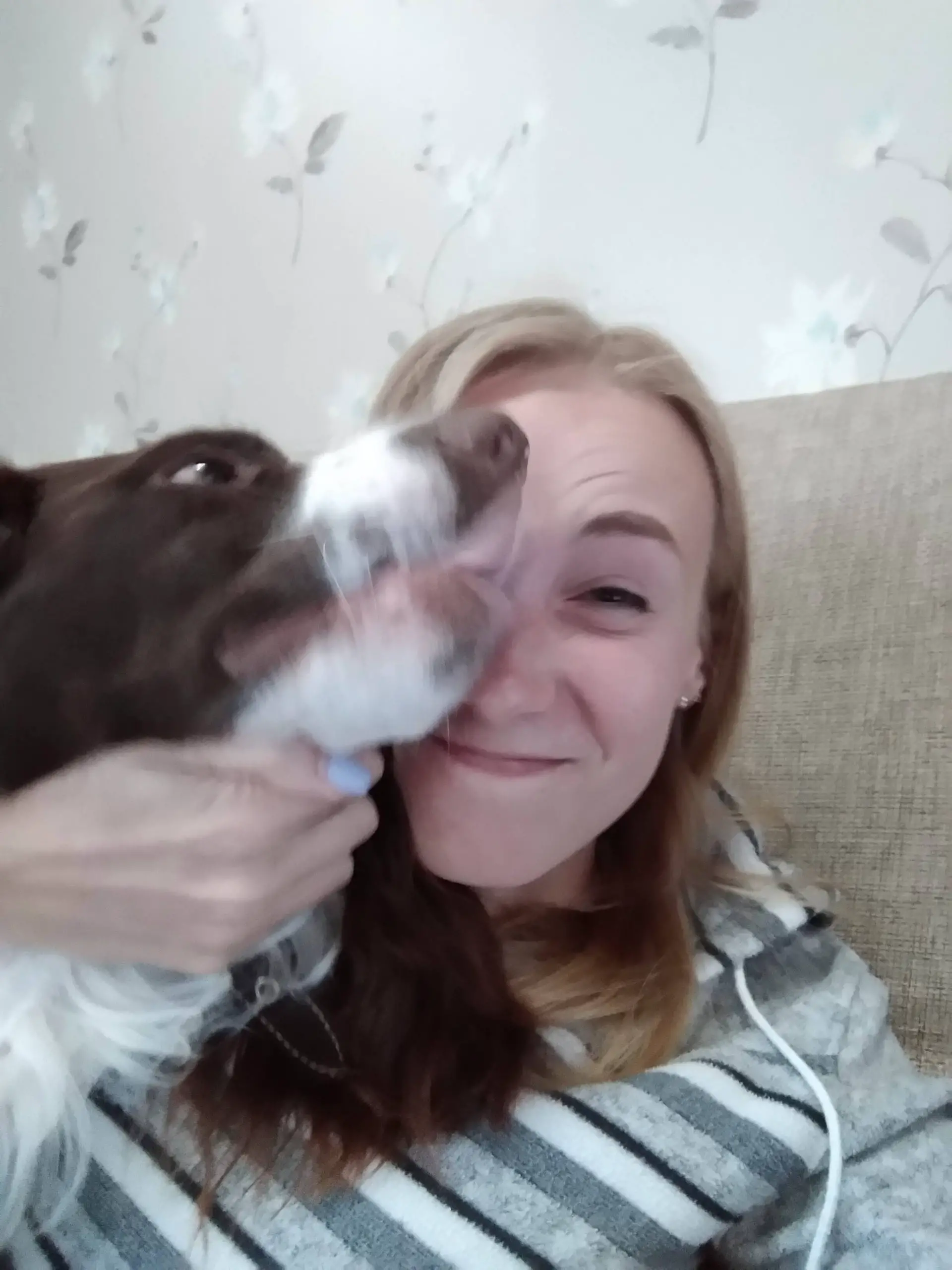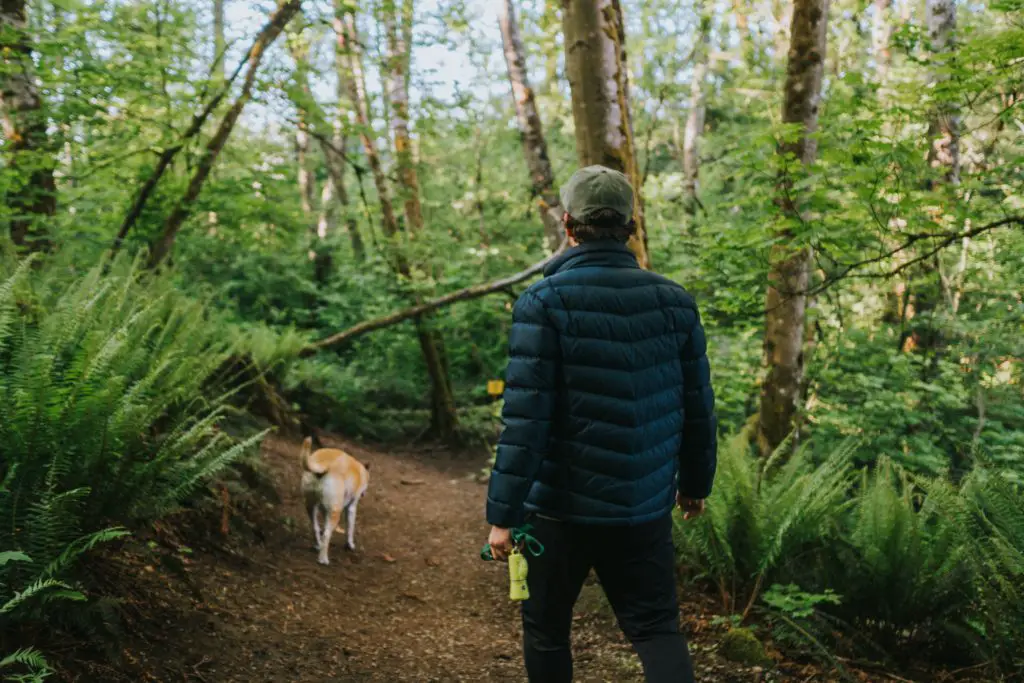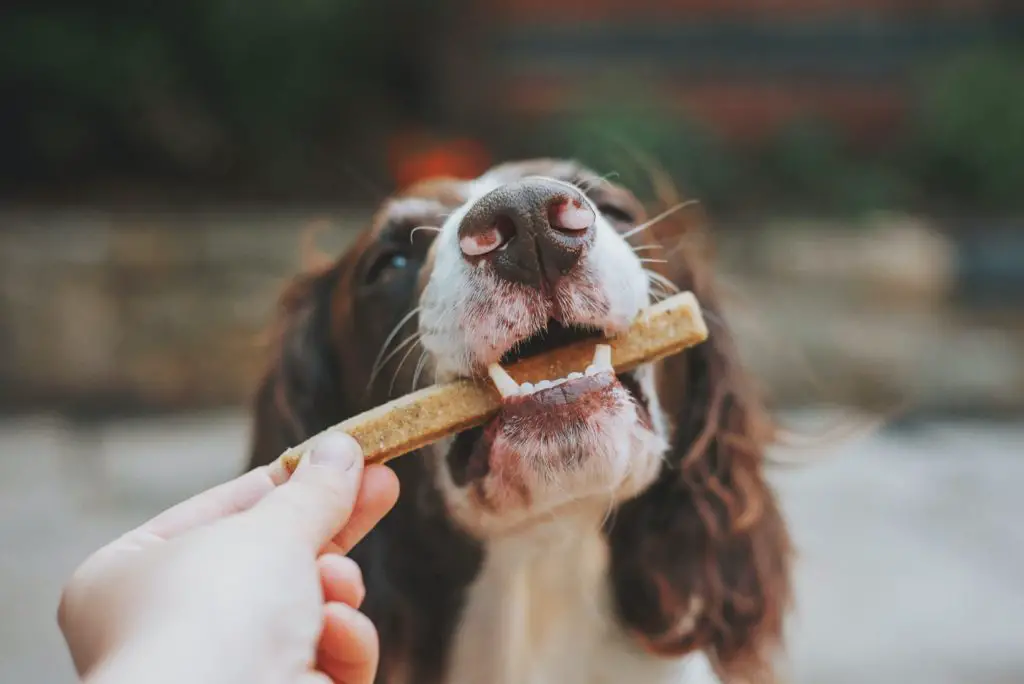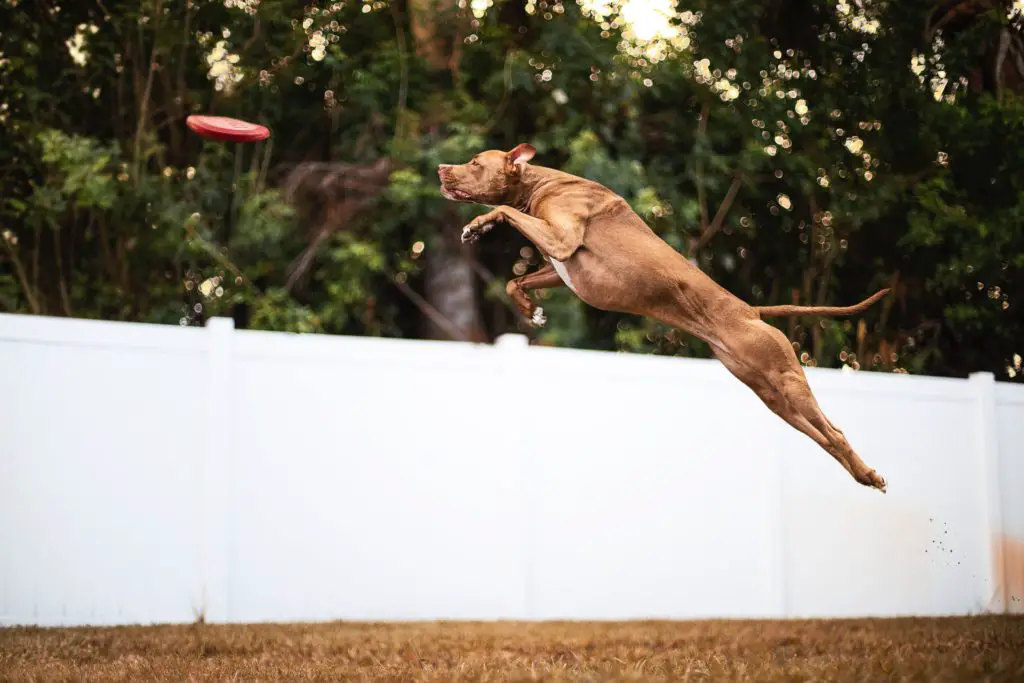Dog owners love to see their dogs smile because we have a tendency to anthropomorphize our pets and want them to express joy in a way that we understand. The problem here is that we can end up misunderstanding key aspects of our dog’s behavioral cues and body language.
Why do dogs show their teeth? The most common reason is that your dog is feeling uncomfortable, threatened, scared, or in pain. Some dogs smile to show submissive behavior. If dogs show their teeth while wagging their tail and getting ready to play, it simply means they are excited.
For example, a dog that opens its mouth and shows its teeth isn’t necessarily happy. So, why do dogs show their teeth and what else should we look out for?
Why Do Dogs Show Their Teeth?
There is the common assumption that dogs show their teeth as a sign of aggression. This is often the case as bared teeth are a sign that the dog is unhappy and wants you to back off. However, there are also times where we can see our dog’s teeth and they appear to be smiling and happy. Therefore, there are good and bad reasons for seeing a dog’s teeth. That is why it is so important to understand other aspects of canine body language. The better you are at reading the situation, the more likely you are to diffuse a negative one.
Do Bared Teeth And Snarling Mean That A Dog Is Going To Bite You?
A dog that bares its teeth and snarls or growls is doing its best to show you, or others around it, that it is not happy about something. They could feel threatened by your presence, dealing with some kind of fear or anxiety, or dealing with pain. Either way, they are telling you to back off. If you can respect these wishes and leave the dog alone then they aren’t going to bite. But, if you ignore the warnings then they could bite as a last resort to protect themselves.
What Does It Mean When A Dog Shows His Teeth But Doesn’t Growl?
This is where things can get a little more confusing for owners. We expect an aggressive dog to make a growling or snarling noise as a more obvious indicator of their displeasure. So, this is where it helps to look out for other aspects of the dog’s body language. Is the dog:
- holding a posture that is more erect and rigid
- holding their ears erect and alert
- holding their tail high and moving it rapidly
If the answer is yes to most or all of these points, your dog is still exhibiting aggressive body language and you need to back off. However, you might notice that,
- their posture is more relaxed
- their ears are flatter and forward-facing
- they are licking their lips
- they aren’t looking directly at you
If so, the dog may be displaying a more submissive form of smiling. But, there is also another possible trait to look out for So, you might also find that,
- their posture is different with raised hindquarters
- their tail is low and wagging freely
- they vocalize differently from snarling or growling
These traits show that the dog wants to play and is excited and happy to be with you. Some dogs will show their teeth in a smile here too. This is why it is so important to be able to tell the difference between the different behavioral traits.
Are Dogs Actually Happy When They Smile?
With these points above in mind, there is a good chance that your dog is smiling because they are showing submissive behavior. This could be because they feel anxious about a situation and don’t want to be out of line as the less dominant member of the pack. There is also the risk that these anxious smiles could develop into more aggressive teeth-baring if the dogs feel increasingly stressed and threatened.
On the other hand, those that seem excited and happy when smiling during play might actually be enjoying a positive experience. There is a form of submissive smile that dogs use to dispel any possible tension. It can be a sign of respect and appreciation for any new person or dog that they come across, almost like they are saying that they are approaching in peace and the other dog has nothing to worry about.
Why Does My Dog Show Her Teeth When Excited?
Some breeds will show their teeth more often than others, and this can include moments of excitement. As mentioned above, some dogs will smile with showing teeth while wagging their tail and getting ready to play. This is nothing to worry about and there is no need to try and correct this behavior.
Is It Normal For Dogs To Show Teeth When Playing?
It isn’t as common for dogs to smile when playing as it is for them to show their teeth in more negative situations. However, these dogs that show their teeth when exciting will carry this over to playtime. They can instinctively flash more of a toothy smile at their playmates to express their pleasure and desire to engage in a game. As long as you see those other tell-tale signals, there is nothing to worry about here.

Why Do Dogs Show Their Teeth When Playing?
Also, it is important to remember that mouth-based cues and actions are a big part of play for dogs. As puppies dogs play and interact with their littermates with their mouths. This sort of play-fighting helps to build social skills and bonds. You will also find them mouthing your hand when playing with them on the floor. A well-trained pup will learn how to do this gently without showing their teeth so they don’t hurt anyone. This will continue into their games as adult dogs.
But, you can still find them showing their teeth in submissive stances with bigger dogs or smiling from the excitement. Keep an eye on their posture, tail movements, and vocalization to make sure there isn’t a negative change. If a dog suddenly gets spooked or threatened by a more dominant playmate in the park then they could switch from happy smiling to scared smiling. Without intervention, this could become aggressive bared teeth.
Why Do Dogs Smile When In Trouble?
This behavior takes us back to the idea of the submissive smile. The dog could be fully aware that they have done something wrong and are using that submissive smile to express their appreciation of your role as the dominant master and to diffuse the situation. In some way, it could be seen as a form of apology and the dog taking a moment to reflect on what they did.
The problem is that the human idea of smiling overshadows the true intention behind the smile. We think of smiling as a symbol of joy and like to project this idea onto our animals. We want our dogs to smile and show that they are content. So, when they smile after chewing up the furniture or getting reprimanded for being somewhere they should, it makes it look like they are proud of themselves.
Why Do Dogs Show Their Teeth When Guilty?
This is a similar situation but with another human construct projected onto the dog. There is a lot of debate over how much guilt dogs can feel. On the one hand, there is that clear sense that they feel bad for upsetting their owner and those submissive smiles are a sign of appeasement. However, guilt is a much deeper emotion when an animal has to have a much deeper understanding of their actions and the impact they had on another being. If you believe them to be guilty so see this smile when they are in trouble as a sign of guilt.
What Does A Closed-Mouth Smile Mean?
This is another example of a “smile” where humans see what they want to see and don’t always fully appreciate a situation. A dog that creates a massive grin on its face without showing any teeth is showing a modified version of the submissive grin. While the submissive grin includes a curled lip to show the front teeth, this one doesn’t. This is a learned behavior for a lot of dogs when they can do this on a “smile” command because it makes their owners happy.
What To Do If Your Dog Shows His Teeth At You?
The first thing that you need to do here is to stop and pay attention to the rest of their body language. Look at their posture, ears, and tail. These aspects are key indicators of the dog’s mood and what they want from you. They might show further signs of excitement where they want to play, they may be a little more anxious and submissive, or they could be a bit more aggressive.
When you are sure about their intent, you can make the next move. If there is aggression behind the bared teeth then back away and give the dog space. If they are anxious, remove them from the situation. If they are excited and ready to play, indulge them. Just be sure to watch out for any changes in their expressions.
Conclusion
There are various reasons why dogs might have a smile on their face. In some cases, we just project our human emotions and reactions on our dogs, so their smile doesn’t necessarily mean the same thing as when humans smile. But one thing we can say for sure: there is a lot we can learn about a dog’t mood when we analyze that doggy smile.

My name is Katie, and I have had different pets at home for as long as I can remember. While I can definitely say I love all animals in general, my heart belongs to cats and dogs. I know you are supposed to choose one or the other, but I could never really decide. I’ve also owned hamsters and fish when I was a kid, and they filled my childhood with very delightful memories.



